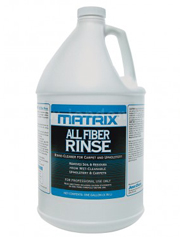The question: How can I safely clean rayon/get water rings out of upholstered furniture decking fabric?
Bill’s answer: Pre-qualify first! Add isopropyl alcohol to your extraction solution and speed dry with a hair dryer. Then pray!
NOTE: If you are a homeowner looking for spot removal advice GO HERE for answers.
Dear Bill,
I am new to the carpet cleaning business and even newer to upholstery cleaning. In January I signed up for Jon-Don’s Free Lifetime “Spot Out” program (which I love!) and have distributed about 150 bottles to my customers. Today I received a call from someone (not my original customer) who said they used MY Spot Out product on a dining room chair and it left a “water ring”. When I asked about the fabric code/type she said she didn’t know as she bought the high end set second hand. However, she “thinks” the fabric is rayon.
Since she isn’t my customer and I personally did not give her the Spot-Out my first instinct was to run away! BUT she does have the Spot-Out with my logo and information on it. So she convinced me to come out and “clean” all of the chairs for a charge.
Here are my 3 questions, Bill:
A. If the chair seats are rayon- can I wet clean them? How can I tell if they are rayon?
B. If I can’t wet clean them, is there a method of dry cleaning, (which I have never done) that I should use?
C. If I can’t “low risk” clean them at all, can I at least spot clean the ring from the Spot Out?
I would greatly appreciate any help you can give me. Thank you!
Grasping in Gainesville
Dear Grasping,
Steve Toburen likes to say that “no good deed goes unpunished!” This case is tricky as she has created a water ring which probably means that it is a natural fiber such as cotton or rayon. (Rayon is really just cotton that has been mixed with a high alkaline chemistry and extruded.)
If you can get a yarn off the bottom of the fabric (or try inside a chair skirt) then do a “burn test”. (Cotton/rayon will burn quickly and leave an orange burning ember that does not extinguish easily.)
 If it is cotton or rayon a water ring will be difficult to remove. Your best bet (AFTER you have explained that you cannot guarantee removal) is to 1) clean it with Matrix All Fiber Rinse paying special attention to the ring and add 1-2 ounces of isopropyl alcohol to the solution. 2) Immediately dry it using a hair dryer on the cool setting until it dries. It may take a couple of attempts.
If it is cotton or rayon a water ring will be difficult to remove. Your best bet (AFTER you have explained that you cannot guarantee removal) is to 1) clean it with Matrix All Fiber Rinse paying special attention to the ring and add 1-2 ounces of isopropyl alcohol to the solution. 2) Immediately dry it using a hair dryer on the cool setting until it dries. It may take a couple of attempts.
If this three step process does not get it all out bring some cheesecloth with you and after you have cleaned it wrap the chair cushion in a few layers of the cheesecloth (try weighting it with something to speed up the absorption) and the residue may wick into the cloth.
When you are doing the burn test if the fiber turns to ash quickly without the orange ember and smells like burning hair you may have silk which will be even more difficult. If that is the case use distilled water instead of tap water.
If your client starts being “difficult” (I think Steve calls them “discriminating” in SFS) remind her that the bottle states to test the fabric BEFORE using the product.
Steve: Bill, I would add that much of this conversation should happen over the phone even before Grasping takes on the job. It is called “pre-qualifying”, otherwise known as “Not letting the customer’s problem become your problem”!
As for dry solvent cleaning it will not be effective as a water-based stain can only come out with water. A petroleum solvent does not work on water rings or spots.
Good luck. Don’t try to be a hero. If you make it worse she may try to get you to replace all the chairs on your nickel. (Read Steve’s comment above once again!) One other option is she could take the cushion to a dry cleaner and they may be able to work on it in their plant. Let us know what happens.
Bill Yeadon
PS from Steve: One thing Bill might have overlooked here is to ask what the original spot was? As in, why was she dumping the Spot-Out on the chair in the first place?
NEWS FLASH UPDATE: Before we ‘went to press” with Bill’s advice here is what we heard back from our SFS Member in the field-
Hey Bill,
Thank you again for you advice on taking care of this dining chair upholstery. The rings were pretty severe and I was not able to fully identify the fabric. They did have a tag on the bottom but I wasn’t sure if they had be recovered and the very old looking tag was never removed. The tag read, 70% wool and 30% jute. I was able to cut only a very small thread and the burn test did not smell like hair and it didn’t linger with a glow like the rayon we thought it might be. It burned very quickly and did not melt. I explained to the potential customer the risked involved in trying to remove the rings and she understood that I could make it worse.
I followed your advice exactly and the rings disappeared!!! There was a little spot left which I believe was the original spot that she tried to clean but she was very pleased that we removed the severe water marks. She wanted me to clean all six chairs and I decided that I’d better walk away and explained to her why. She was OK with that and I presented her with a price to clean all of her carpet instead. She said she’ll have me out in spring.
The moral to the story…
Follow the instructions on the bottle! And…
Make lemonade!
Thanks again!

Willa wrote in with this comment:
I purchased a Flexsteel sofa and two recliners and relied on the salesman to guide me re the fabric content. I had not purchased furniture in many years and was not aware RAYON was used in a lot of furniture. The rayon fabric on the recliners is a solid color and needless to say there are quite a few water spots which are there to stay..wish I had known about this site months ago and the product advertised.
I’ll replace my furniture in a couple of years and will be sure and notice the fabric content on the new furniture. My furniture is custom made and I paid quite a bit for it, so I’ll lose money by selling it second hand. Lesson learned..I’m amazed in how furniture companies use RAYON as a fabric, doesn’t make sense.
I believe rayon to be the fiber from Hades. It is made from the waste material (cotton linters) left over from cotton processing. Manufacturers use it because it is cheap. Besides water ringing and browning it is 40% weaker when wet and has a tendency to shrink when cleaned especially in the skirts.
I am sorry your salesperson wasn’t more forthcoming in explaining the pros and cons of the fabric. It may have been they were not well trained. A fabric cleaning expert should be able to improve the overall appearance of the fabric. I would quiz them thoroughly over the phone before they come to clean. Ask them how they normally clean a rayon blend and if they hesitate or say its’s easy to clean, move on.
You may want to contact http://www.iicrc.org to get the name of a certified fabric cleaner.
Good luck.
Thank you for your response, I appreciate it. The furniture salesman had been working in the furniture business for over 30 years, that is why I trusted his judgement. I’ve educated myself with your help as what to look for in my next purchase.
Thank you again,
Willa